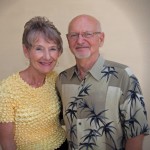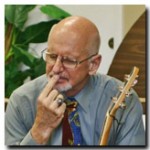
“Many things have changed since 1963 (when King wrote this). And some deep things have not changed . . . There are probably more vicious white supremacists in America today . . . The victims are likely to be Latinos or Somali immigrants as African Americans . . . The Ku Klux Klan has no corner on hate anymore” (John Piper, Bloodlines, p. 27).
In my shut-in, sheltered life, I don’t see that. That’s why I need King’s letter. It offers perspective. It helps this old white guy see life from inside the experience of a black man.
A bit of background. As I said already, the year is 1963. In the Birmingham (Alabama) News, eight white Christians and Jewish clergymen criticize King for proceeding with public protests in the city. King responds with this letter. Here’s a portion . . .
“Perhaps it is easy for those who have never felt the stinging darts of segregation to say, “Wait.” But when you have seen vicious mobs lynch your mothers and fathers at will and drown your sisters and brothers at whim; when you have seen hate filled policemen curse, kick and even kill your black brothers and sisters; when you see the vast majority of your twenty million Negro brothers smothering in an airtight cage of poverty in the midst of an affluent society;
” . . . when you suddenly find your tongue twisted and your speech stammering as you seek to explain to your six year old daughter why she can’t go to the public amusement park that has just been advertised on television, and see tears welling up in her eyes when she is told that Funtown is closed to colored children, and see ominous clouds of inferiority beginning to form in her little mental sky, and see her beginning to distort her personality by developing an unconscious bitterness toward white people;
” . . . when you have to concoct an answer for a five year old son who is asking: “Daddy, why do white people treat colored people so mean?”; when you take a cross county drive and find it necessary to sleep night after night in the uncomfortable corners of your automobile because no motel will accept you; when you are humiliated day in and day out by nagging signs reading “white” and “colored”; when your first name becomes “nigger,” your middle name becomes “boy” (however old you are) and your last name becomes “John,” and your wife and mother are never given the respected title “Mrs.”;
” . . . when you are harried by day and haunted by night by the fact that you are a Negro, living constantly at tiptoe stance, never quite knowing what to expect next, and are plagued with inner fears and outer resentments; when you are forever fighting a degenerating sense of “nobodiness”–then you will understand why we find it difficult to wait. There comes a time when the cup of endurance runs over, and men are no longer willing to be plunged into the abyss of despair. I hope, sirs, you can understand our legitimate and unavoidable impatience” (p. 26).
“Many things have changed. And some deep things have not changed.”
Paul’s letter to Philemon got me started on this, even master Philemon and slave Onesimus likely shared the same ethnicity. Slavery just reminded me of racism
I’m a majority race trying to see life from a minority’s. I don’t want a hint of white supremacy or black (or any other race) inferiority to have place in my mind or heart. I want to treat my black brother in Christ as beloved. And I want to treat my black fellow man with dignity as one created in the image of God.
So black parents caution their just-starting-to-drive kids: “Be especially polite if you’re pulled over by a white policeman. And keep your hands out in full view all the time.” Why? Because racism sometimes intercedes.
So a black man walks into our all-white church? How do I treat him–particularly if he asks for financial help after the service?
Why am I writing all this? Vinay Samuel, director of the Oxford Centre for Religion and Public Life said this over twenty years ago and it’s still relevant today . . .
“The most serious thing concerning [the credibility of our global witness] is the image around the world that evangelicals are soft on racial injustice . . . One sign and wonder, biblically speaking, that alone can prove the power of the gospel is that of reconciliation . . . [Hindus and Muslims] cannot duplicate the miracle of black and white together, of racial injustice being swept away by the power of the gospel . . . Our credibility is at stake.”


 (Please play video at end.) The existence of an organization like “Black Lives Matter” (
(Please play video at end.) The existence of an organization like “Black Lives Matter” (


Recent Comments